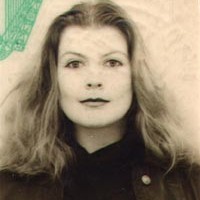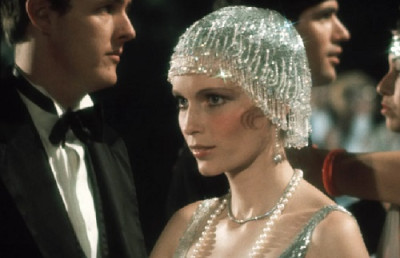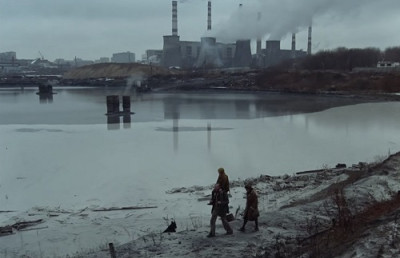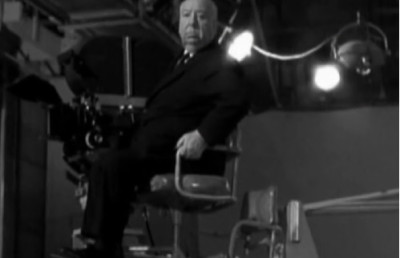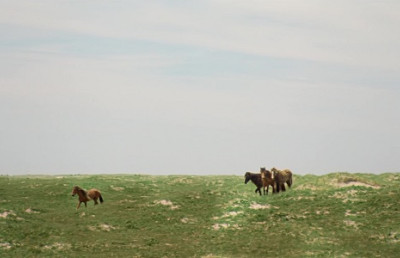Los Angeles Eats Itself: L.A. Private Eyes and the Hard Boiled Tradition
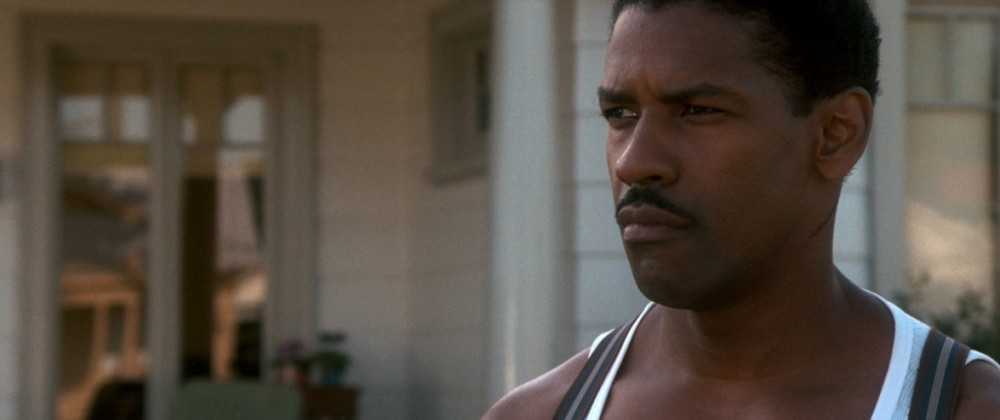
L.A. Private Eyes (Quick Takes: Movies and Popular Culture)
Dahlia Schweitzer, Rutgers University Press, 2019, pp. 180
Hard-Boiled Hollywood: Crime and Punishment in Postwar Los Angeles
Jon Lewis, University of California Press, 2017, pp. xii + 233
Laconic, tough, witty, world weary, Raymond Chandler’s seven Los Angeles-set private eye novels starring Philip Marlowe contain an inner core of truth about the goings-on in that city, exposing conspiracies and class and geographical differences by dint of the architectural stratification called up in his typically vivid style as he prowls the growing neighbourhoods. The books also convey a love-hate relationship with the place the London-born writer called home:
I used to like this town,” I said, just to be saying something and not be thinking too hard. A long time ago. There were trees along Wilshire Boulevard. Beverly Hills was a country town. Westwood was bare hills and lots offering at eleven hundred dollars and no takers. Hollywood was a bunch of frame houses on the inter-urban line. Los Angeles was just a big dry sunny place with ugly homes and no style, but good hearted and peaceful. It had the climate they just yap about now. People used to sleep out on porches. Little groups who thought they were intellectual used to call it the Athens of America. It wasn’t that, but it wasn’t a neon-lighted slum either. (Chandler, The Little Sister, 1949)
It’s an endlessly entrancing vista that is far from exhausted. From Dashiell Hammett’s Continental Op and Sam Spade to Ross Macdonald’s Lew Archer, from Michael Connelly’s Mickey Haller to Joe Ide’s Isaiah Quintabe, and a slew of troubleshooting guys in between; the private detective properly born in Chandler’s The Big Sleep (1939), is the stuff of myth and dream, the manifestation of a fluid society remaking and reinventing itself, before, during and immediately after World War II, helping to create and fill out a film form that would be retrospectively christened film noir, literally black film. In the recent publication L.A. Private Eyes, author Dahlia Schweitzer sums up the Expressionist-influenced morbid dramas of betrayal featuring determinedly antiheroic protagonists: “films made in America largely during the 1940s and 1950s that had a style both dark and cynical, with urban settings full of pessimism, fatalism, and paranoia and characters full of intrigue and suspicion” (7).
The private eye finds his ultimate home in Los Angeles, the centre of the movie industry and ultimately becomes a part of its mythmaking and nightmare. It’s a broad canvas for crime, mystery, conflict and resolution. Schweitzer says of her impressions when she moved there and mapped the stories on to the streets she travelled every day, the city “became synonymous with crime and intrigue, webs of conspiracy lurking just behind the palm trees and movie stars” (Schweitzer: 2). What makes this sprawling location so uniquely suited to the noir possibility? The author claims: “Los Angeles is a place unlike any other, and for this reason, the L.A. private eye cannot exist anywhere else” (4). How that cinematic city materialises – in its consistency, its deviation and its modern plenitude – is what this work explores against a backdrop as varied, dangerous and intriguing as the novels and films it inspires, starring a renegade sleuth who is invariably single, alcoholic and acting alone, in a genre whose conventions have remained remarkably consistent over its century-long existence.
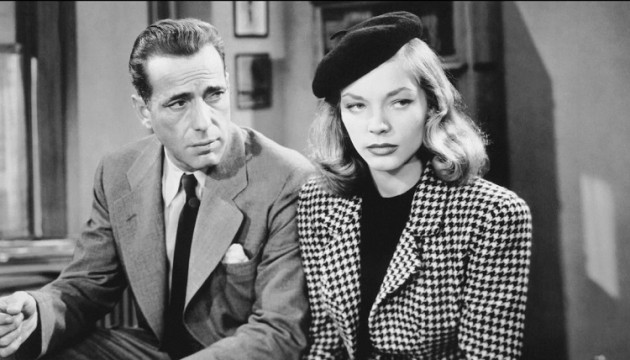
The Big Sleep
The issues of narrative logic arising from incomplete detail in The Big Sleep caused confusion among the stars of the eponymous film adaptation (1946, Hawks) but Schweitzer claims:
The purpose of the detective narrative, as seen in The Big Sleep, is merely to present these episodic fragments; life is portrayed as a series of moments without an overarching narrative. It is the crime that becomes the impromptu organizational device, not only in The Big Sleep but in other detective narratives to follow. The crime provides an illusion of movement to a string of otherwise plotless moments… (Schweitzer: 12)
The whole point of the L.A. private eye is not just the crime but the city itself, its aesthetic intimately bound up with the genre:
Los Angeles, as depicted by Chandler, is a city full of desire and deceit, where money, power, and ambition hold more ground than morality, law, or tradition, where bookstores conceal pornography and private mansions conceal murder. And it is the drive to penetrate the mask, to discover the truth behind the façade, to expose the secrets that would otherwise remain hidden that drives both the L.A. detective and the L.A. detective story. This is why both belong together. (Ibid.)
Its topography and its suburbs, its beaches and its streets, its bungalows and its hotels and its nightclubs and its gas stations and its office buildings and its distinctive neighbourhoods became entwined with the isolating effect of the car required to get anywhere on the freeway network that would not finish construction until the mid-Sixties. As the author says, “Los Angeles offered a visual manifestation of a faster, more streamlined way of life” (14). And yet it was a desert town with Wild West frontier ethics, beset by race and gang problems (viz., the Zoot Suit Riots), ongoing issues with transients and deep-seated corruption connected with the presence of the Mob who were in the city since the turn of the century and had become embroiled with the trucking unions at the movie studios early in their establishment.
She continues:
Los Angeles became distinguished not only by the automobile but also by these seemingly different and distinct spaces that lived cheek by jowl, a characteristic integral to the development of the L.A. private eye (14).
Beneath the shining sun and the superficial attractions, the private eye is battling systemic corruption and widespread conspiracies:
…in Los Angeles, crime is constant. Each specific case becomes an excuse to expose the hidden corruption or wrongdoing. This is why crimes (and criminals) are rarely simple in L.A. detective narratives. They are the metaphoric equivalent of a loose thread that, when you tug on it, causes the whole sweater to unravel. What seems at first to be a simple murder, kidnapping, or blackmail is inevitably linked to political corruption or criminal conspiracy on a massive scale. These narratives depict a world where nobody is as he or she appears, and everyone is an unreliable narrator, omniscient or otherwise (24).
In a massive city of extremes divided by wealth and race, the private detective becomes our negotiator and navigator in a psychological and physical space that possesses an ironically alienating urban anonymity:
The only person who can easily transition from one neighborhood to the other, regardless of race and social class, is the private detective, the new urban cowboy. Viewers and readers need him to guide them through an urban environment that grows more menacing, more overwhelming, and more isolating by the day. They need his eyes and his automobile in order to experience and understand the city as a whole (25).
Schweitzer traces the evolving figure of the detective from Poe’s C. Auguste Dupin in Murders in the Rue Morgue, whose rational approach to crime involves working out what to observe by placing himself in the mindset of the murderer. Poe established tropes that would be intrinsic to the genre for years to come. Later characters in British fiction like Sherlock Holmes, Hercule Poirot and Father Brown would have individual quirks that had their own attractions beyond their deductive capacity. However these mysteries do not have the ‘hard-boiled’ quality of their American opposites where the restoring of order is only a temporary measure before another suspicious figure emerges from the swamp. This was particularly the case after World War One but there was already a healthy market in weeklies and dime novels which would eventually earn the collective moniker of pulp fiction. The hard-boiled detective was a particularly popular type and under the editorship of Joseph T. Shaw Black Mask distinguished itself by supporting this new kind of narrative (36). Carroll John Daly’s detective Race Williams set the ball rolling, soon followed by Dashiell Hammett’s Continental Op, but it was Raymond Chandler and James M. Cain who took the private eye to the mean streets of Los Angeles (37). Thus was the American crime story born, its burgeoning popularity enhanced by radio’s Detective Story Hour and Hollywood’s adaptations of the above authors who all, at one time or other, worked on screenplays for the studios. The noir form was adaptable across the crime and gangster genres, its strategic structure of delay followed by discovery enhanced with flinty one-liners and witty repartee; and Chandler’s Twelve Notes on the Detective Story proves to be equally apt as a genre template decades after he wrote it, as Schweitzer illustrates (46).
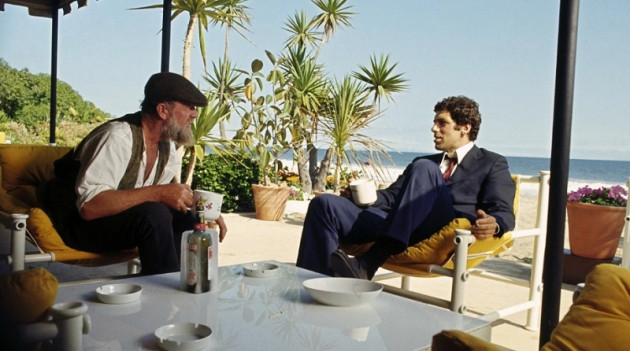
Neo-noir films appeared on and off from the Sixties through the Nineties, starting with Marlowe (1969, Bogart) and reaching a high point with both The Long Goodbye (1973, Altman), which demonstrates how out of place the traditional private eye is in the modern world; and Chinatown (1974, Polanski), which emerges from the origins of Los Angeles as a desert town and becomes a Greek tragedy dealing with water, power and incest. Schweitzer identifies a key element in this genre iteration:
the chief difference in this new version of the private eye is in his interactions with the surrounding world. He suffers even more under the weight of social alienation (48).
The private detective on TV has something of a rogue outsider element, from Peter Gunn (NBC 1958-1960 and ABC 1960-2962) to The Rockford Files (NBC 1974-1980) and Riptide (NBC 1984-1986). The author concludes that no matter the repetition or variation, the private detective is always a straight, white male (62).
The romantic outsider became a trope of the original Twenties and Thirties private eye’s characterisation due to fears of Government and then big institutions; fear of the domestic further embellished his status as an attractive loner. Schweitzer calls him “the Lone Ranger in a Cadillac or a Lincoln” (64). Originating with the idea of Philip Marlowe as a ‘knight errant,’ the private eye has his own code and his integrity rests with his adhering to this code or bending the rules a little to get results. Both strands of the detective story – the traditional and the hard-boiled – are viewed through the prism of the detective himself, with the second type obliged to traverse the vast urban landscapes of Los Angeles: have car, will travel. Pursuit is the name of the game, with Michael Connelly’s Lincoln Lawyer Mickey Haller doing business from the back of his luxury vehicle. In the 2011 neo-noir adaptation (directed by Brad Furman) this permits the viewer to see parts of the city other films simply don’t reach, this modern cowboy figure’s relationships with associates, ex-wife and clientele straddling a range of characters and classes, his own lifestyle problematizing issues around the representation of women and institutions. However, unlike the police detective his moral code as outsider is the final arbiter of justice. It is often (quite literally) the rogue cop who can do the same.
The author deviates from the customary studies of noir by looking at the issue of race, confronted in chapter 4, The Black Detective, in which she examines the (brief) history of minority representation on screen commencing with A Black Sherlock Holmes (1918) the first and unsuccessful attempt to bring the detective figure to African-American audiences who rejected its caricature; ironically, it worked for white people. It would take another fifty years for Knick Carter to have a successor, Virgil Tibbs (Sidney Poitier) in In the Heat of the Night (1967, Jewison), a police detective whose California origins in the source novel by John Ball are altered to Philadelphia. It would be another two decades until the release of Beverly Hills Cop (1984, Brest), a star-making vehicle for raucous standup comedian Eddie Murphy, granted two white sidekicks in the LAPD when he arrives in the exclusive enclave to solve a murder. ‘Otherness’ gives the black a further level to negotiate, which makes Walter Mosley’s private eye Easy Rawlins a standout in more ways than one in detective fiction, ironically because Chandler’s Philip Marlowe was apparently inspired by real life black private eye Samuel Marlowe (81). The CW network failed to get a series about him off the ground.
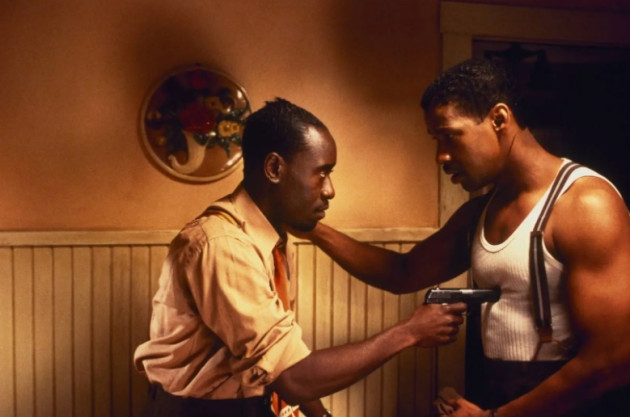
Devil in the Blue Dress
Rawlins returns us to the universe of the World War Two veteran. Adapted for the screen, the first book in Mosley’s series, Devil in a Blue Dress (1995, Franklin) starring Denzel Washington is one of the best films of its time but did not do business. Perhaps because of the recent Simpson case; perhaps because race and difference are constantly visible. Or perhaps because Easy doesn’t have a white sidekick? Or perhaps because a woman is passing for white and it’s all about inter-racial marriage with plenty of upfront sexual activity. Not forgetting that the police are clearly depicted as the enemy (91-96). His sole predecessor, Shaft (1971) was the black private eye (Richard Roundtree) loved by all, a bastion of Seventies cool, a licensed P.I. and lone wolf who traversed the mean streets of New York, adorned with excellent outfits and a great theme song. He is a world away from the home-owning amateur dick who leaves the violence to his black sidekick Mouse Alexander (Don Cheadle) as though the concept of the Angry Black Man is an affront too far.
The complexities of being a female private eye relate to the narrative’s origins in masculinity and heroism and the tough, even crude language of the protagonist which doesn’t lend itself to female expressivity. Female detectives’ amateurism is a sap to issues within the domestic sphere where solutions can be attributed to luck, and their presumed skill at cleaning the kitchen can assist in the literal cleaning up. Anything else is perceived to disturb the male/female dichotomy and the action dimension of the genre. Its emotional bedrock of male anxiety sublimated in masculine toughness could not be contested by a woman.
The adaptation of Sue Paretzky’s V.I. Warshawski (1991, Kanew) highlights these issues with sexualised jibes and visual indicators at Vic’s lack of perceived femininity (a dirty refrigerator), insinuating that the only true success for women is motherhood, in stark contrast to the liberated public defender turned feminist detective of the novels. The L.A. private eye is even working in Chicago. Ironically, in crushing those aspects of Warshawski that made her so appealing in the first place and replacing them with Hollywood cliché, the anticipated franchise did not materialise.
In the Sixties, Honey West (ABC 1965-1966), adapted from the G.G. Fickling books, kept the Los Angeles setting and became the first TV detective show to star a woman. As played by the alluring Anne Francis, the ‘nerviest curviest P.I.’ (modelled on a combination of Marilyn Monroe and Mike Hammer) has a male sidekick who often rescues her, a pet ocelot and a mother to keep house while she carries on her late father’s work clad in animal print. Schweitzer links this ‘overly feminized female detective’ (117) with a later book series by Walter Wager whose character Alison B. Gordon makes the transition from CIA agent to private eye, a widow with a penchant for sex characterised as a femme fatale perhaps rendering her more susceptible and vulnerable.
In Remington Steele (NBC 1982-1987) Laura Holt (Stephanie Zimbalist) can not attract clientele to her detective agency until she invents a fictional male boss and then people line up around the block to employ the titular conman (Pierce Brosnan), the company’s acceptable public face. In this witty commentary on sexist conventions frequent verbal references remind us of the social iniquities of chauvinism.
In Moonlighting (ABC 1985-1989) the Blue Moon Detective Agency clearly belongs to former model Maddie Hayes (Cybill Shepherd) but as the author points out, there is no hierarchy between her and her employee David Addison (Bruce Willis) (121). The episode based on The Taming of the Shrew acknowledges creator Glen Gordon Caron’s inspiration for the characters; while Schweitzer observes in Maddie’s clothes and demanding and tetchy behaviour a certain naiveté and even infantilising femininity. Schweitzer concludes: “Yet again, the message is how incompatible femininity is with detecting” (123). Hence women are placed in teams that do not indulge private detective work:
… female detectives are often police officers or FBI agents, sometimes even lawyers or insurance investigators, buried in teams, networks, and bureaucracy.(Ibid.)
This habit can be observed in TV shows from Get Christie Love! (ABC 1974-1975) to Police Woman (NBC 1975-2978), Cagney & Lacey (CBS 1982-1988) and the ongoing Law and Order: SVU (NBC 1999-present), in which complex mysteries are replaced by the necessity to maintain law and order while female police detectives invariably struggle to balance their private lives with their professional obligations. In light of the fact that women are permitted to solve mysteries on the big screen but they do not do so in the guise of the private detective, Schweitzer asks,
Can the answer be as simple as that an independent woman, even in the twenty-first century, remains too threatening for Hollywood to imagine? Would audiences even watch if she were out there? Would V. I. Warshawski have been more of a success if she had not been turned into a joke? If she had not had to double as a babysitter? Women as part of a team—either in a partnership or on a police force—are less threatening. (Schweitzer: 126)
The exception to this is the big screen franchise (two to date) based on the Seventies TV series Charlie’s Angels (ABC 1976-1981) in which the real male figurehead (whom we never see) employs three former policewomen who go undercover and solve mysteries. Their empowerment is enhanced by their teamwork and trust even if the title and opening narration emphasizes male ownership and control. Schweitzer further finds that female private detectives are differentiated from their male counterparts by their choice of car, a convertible that puts them on display and renders them visible and hence more vulnerable. The failure of TV powerhouse Shonda Rhimes’s series The Catch (ABC 2016) might be attributable to protagonist Alice Vaughan’s (Mireille Enos) excessive femininity: “Vaughan reads more as a femme fatale than a private eye” (130-131). She sports ridiculously large false eyelashes which perhaps cause her inability to see that she is engaged to marry a conman who rips her off. Not such a good look after all.
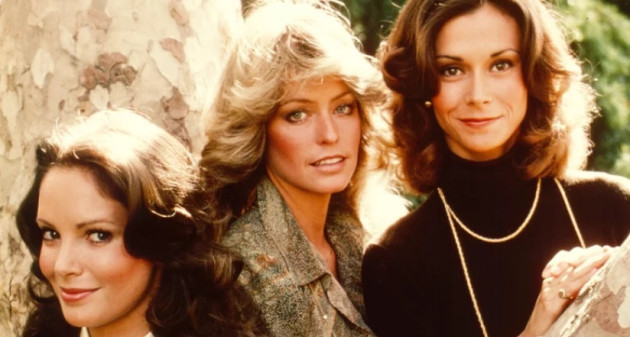
Charlie’s Angels
Schweitzer’s rather depressing conclusion is:
Despite the fact that, in our perpetually racist society, a white woman may appear as higher on the racial hierarchy in certain circles, in the world of the L.A. private eye, she is an anomaly that must be tempered with good looks, high heels, and a team or a partner by her side. (132)
The girl sleuth is examined as a subset of the ‘lady dick’ genre. The author states that her value lies precisely in her youth:
…the girl sleuth can add these same kinds of characteristics—empathy, sensitivity, femininity—while not posing a threat. The girl sleuth rarely exists in Los Angeles or any big city, for that matter. She is more emblematic of the “cozy mysteries” common to the traditional detective narrative—in which a criminal anomaly upsets the tranquility of a small town—than of the urban corruption and pervasive criminality of the hard-boiled detective narrative (134).
Starting with Nancy Drew, whose independence is linked to her ability to drive a blue car, her screen portrayal by Bonita Granville in a series of films in the Thirties disempowered her:
This shift reflects how troublesome a confident female private eye can be—even when underage—and the steps Hollywood will take to make her less threatening than an adult, professional, female private eye. Regardless of the format—silver screen or written page—Nancy manages to balance femininity with bold adventure, glamorous and interesting enough to inspire and entertain but not so glamorous and interesting that she might cause trouble. (Schweitzer: 145)
The teenager’s pursuit of criminality is not of the serious variety and indeed she is financially secure because of her father’s income (he is a lawyer) so her crime solving can be dismissed as a hobby, her very amateurism an excuse for outlandish behaviour. This safety valve is also familiar to readers of Dorothy Sayers’ Harriet Vane, Agatha Christie’s Miss Marple or Jessica Fletcher in the TV series Murder She Wrote (CBS 1984-1996). The author also notes that the respective ages of these protagonists eliminates the need for a romance subplot or motherhood (146).
Schweitzer’s upbeat findings about the ongoing value of the L.A. private eye concludes in the seedy beach town setting south of L.A. for TV’s Veronica Mars (UPN/CW 2004 – 2006), another motherless girl sleuth battling sexist expectations and disruptions in transgressive fashion (the narrative refined its parameters and Veronica’s motivations in the film version a decade later). It gives solace and some reassurance of a future in which we are still watching the detectives despite constant online chatter. While the modern private eye’s technological skillset plays a paramount role in procedural success, the moral fundament of the genre persists:
The L.A. private eye, whether Veronica as “L.A. private eye in training” or any of the others, demonstrates the power of the individual. In a society and a city where individuality feels increasingly anonymous and powerless, there is affirmation to watching a solitary person acting—with no ulterior motive—to make things right (169).
It’s a compelling argument, persuasively structured throughout a stylishly written volume whose observations are pertinent in an admirably lucid account that makes (as the Rutgers series title suggests) quick work of prototypical narratives, bringing order to the chaos of disparate films, key movements and exemplary protagonists.
Perhaps one of the most attractive things about cinema to the aspiring student is the opportunity to excavate its history as one would an archaeological find, just as C.W. Ceram did in his pioneering 1965 study, itself a kind of private investigation.
In another entry in the crowded field of noir, the subject is appropriately dictated by real bodies.
Elizabeth Short. Jean Spangler. Barbara Payton. Marilyn Monroe. The baleful list of names with only one thing in common – terrible death. The history of Los Angeles is written on their bodies.
The post-war city was a febrile and dangerous place and yielded such literary fiction as In a Lonely Place (1947), Dorothy B. Hughes‘s incisive portrayal of a returning World War Two veteran who handles his rage in serial killing 1 It was inspired by the Los Angeles body-dumping phenomenon that happened in the years immediately following the conclusion of World War Two. The film adaptation (1950, Nicholas Ray) stars Humphrey Bogart as screenwriter and chief suspect Dixon Steele, perhaps the author of a murder in Benedict Canyon. The city was then a teeming mix of intersecting subcultures that were dangerous for young women on the make and where the biggest industry – military manufacturing – was being repurposed to create a new kind of society with machines tooling cars and all the household goods required for the coming tsunami of suburbanising (Silver & Ursini, 2005: 139-155).
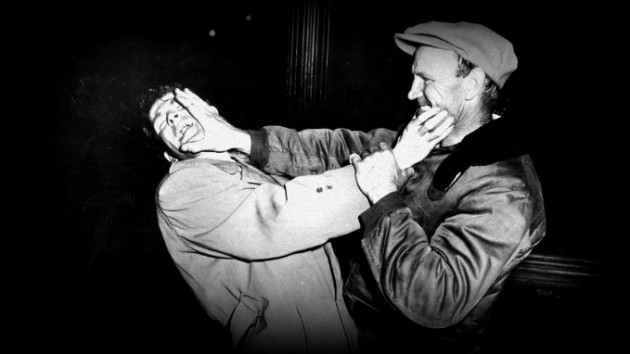
I, the Jury, 1953
It is this backdrop that Jon Lewis captures in Hard-Boiled Hollywood, a multi-faceted anthropological exploration of the different influences that came to form Los Angeles in the post-war years, tracing the crosspollination of movie actors, mobsters, gossip columnists and loathsome lowlifes crashing up against one another in a remarkable subcultural fluidity, culminating in a post mortem story, told through the body: specifically that of the Black Dahlia, along with those of Jean Spangler, Barbara Payton and Marilyn Monroe. These physical bodies incorporate the confluence of journalists, filmmakers and crimes with wannabes and starlets, gamblers, hitmen and chancers, the real lives behind the city most associated with film noir, a narrative type whose most important trope is the flashback, a play of darkness and light disrupting notions of masculinity, agency and social order in stories of spiralling lawlessness, loneliness and lust, depravity and death. Those spectacular bodies are the physical representation of what Nathanael West describes in his caustic masterpiece, The Day of the Locust:
This was the final dumping ground. He thought of Janvier’s Sargasso Sea. Just as that imaginary body was a history of civilization in the form of a marine junkyard. The studio lot was one in the form of a dream dump. A Sargasso of the imagination! And the dump grew continually, for there wasn’t a dream afloat somewhere which wouldn’t sooner or later turn up on it, having first been made photographic by plaster, canvas, lath and paint. Many boats sink and never read the Sargasso, but no dream ever entirely disappears. Somewhere it troubles some unfortunate person and some day, when that person has been sufficiently troubled, it will be reproduced on the lot. (West, 1939: 81)
The hard-boiled detective may have been birthed in The Maltese Falcon (1941, Huston) and based in San Francisco, but it’s the phenomenal changes in the years after the war that concern the author. Beyond the studio lot, the Hollywood dream is given pause by the decomposing flesh of these murdered women, marginal individuals attracted to Hollywood as moths to a flame, some the victims of organised crime, some the victims of their own romantic notions, far from the femmes fatales of fiction. Then their tragic tales receive the inevitable transmuting into detoxed moral fables delivered in silver nitrate and pulp fiction. It’s the fetid flipside to the glamour of the movies with so many people involved in the industry falling prey in their somnambulant drift towards the lure of an uncontrolled world spreading its tentacles to the creeping suburbs where the city unleashes its limits and the term badger-baiting takes on a very different meaning than it might in a traditional rural milieu.
Do you look down on all women, or just the ones you know?
(Gloria Grahame to Humphrey Bogart in In a Lonely Place, 1950)
Lewis’ re-reading of Hollywood through the public record is an alternative history inspired by the aforementioned Bogart film, but also Sunset Blvd. (1950, Wilder) and The Big Knife (1955,Aldrich) (examined extensively here), texts that conjure the business’s own complex response to “an industry that was in the process of transforming the relationship between owners, management, and talent” (Lewis, 2017: 67). What Lewis noticed in these films is that they all have in common a dead body (4). He unsheathes a pornographic geography and psychology of change in a movie city which attracted thousands of talented emigrés as well as a horde of ambitious exhibitionists, creating a maelstrom of potential subversion and decadence in exile, a culturally displaced community attracted by the hard-boiled artistry of those pulp novelists to create their own shadowy films and labelled by the F.B.I. as “communazis” (Lingeman, 2012: 193). This change takes place in a discomfiting overlapping of public and private space, with an extraordinary cross-section of people exhibiting a “seemingly boundless range of behaviour” (Lewis: 65). Even evangelical Billy Graham couldn’t resist Los Angeles.
Where these stories coalesce in cinema is in the opening of the film adaptation of In A Lonely Place with its montage of photographs of a body dump. This is one of a handful of films set in Los Angeles which explicitly link crime, film noir and the movie business. Bogart’s involvement in the production, with its overt reference to the blacklist, might be regarded as a form of atonement for his purported misunderstanding of the Hollywood Ten, when he was truly in over his head (126).
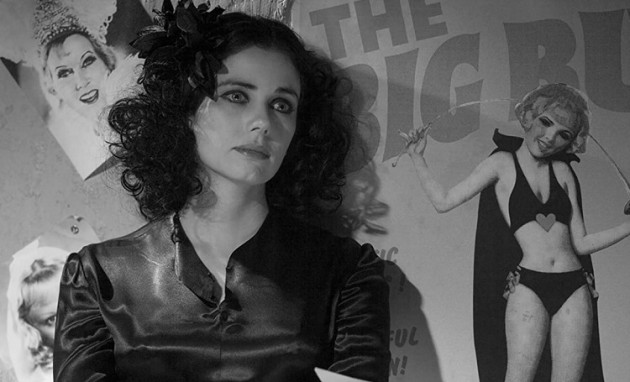
The Black Dahlia, 2006
The shocking and cruel case of Elizabeth Short (or The Black Dahlia) is explored fictionally in the eponymous 1987 novel by author James Ellroy, whose own mother (Geneva Hilliker) was murdered in 1958 and whose unsolved case served as inspiration to reconsider the killings of women that troubled Los Angeles in 1947 as well as directly informing his memoir My Dark Places (1996). Ellroy’s nihilistic persona as the self-styled ‘demon dog of the hog-log, the foul owl with the death growl, the white knight of the far right, and the slick trick with the donkey dick,’ reflects the content of his cycles of crime novels. His so-called L.A. Quartet is a corrosive meta-fiction chronicling murder, scandal and double-dealing in the post-war Los Angeles Police Department, starring (latterly fascistic) Officer Dudley Smith. Ellroy emerged at a time when the critical climate was very different to that which greeted Chandler and his contemporaries whose work was swiftly dismissed – Ellroy is taken seriously and his books are read as social history rather than genre work, their concluding pages veering towards that age-old American solution to conflict – extreme violence. This acceptance is partly due to our latterday acknowledging of the extent of crooked cops colluding with criminals, partly to nostalgia. Critic Dan Jones catalogues Ellroy’s obsessions:
Murder, rape and torture; small-time corruption and big-time history; sexual intrigue and moral ambivalence; lust, yearning, racism, alcoholism, degeneracy and drug abuse; plastic surgery, prostitution, policemen and paedophilia; scandal, sodomy and sin; alliteration; opera, people having sex with donkeys, and dangerous red-headed women who are more often than not called Joan. (Jones, 2019: 35)
Both The Black Dahlia and L.A. Confidential (1990) have been adapted for the big screen, with the latter film (1997, Hanson) an allusive mix of real and fake locations, “switching between the monumental and the everyday” (Silver & Ursini: 39). Schweitzer reminds us that part of that film’s appeal is its social context which was especially timely in 1997 following the O.J. Simpson case and just before the Rampart Division scandal exploded (81). Lewis declares the Short murder and the fruitless investigation that ensued as setting in motion “the dark celebrity narrative that would fundamentally transform how American filmgoers imagined Hollywood” (Lewis: 4). Both Ellroy adaptations linger long on the gruesome truth beneath the surface glitter. Lewis takes that baton and runs with it, bringing real depth of research and historicity to untangle the messy strands of reality behind Ellroy’s work.
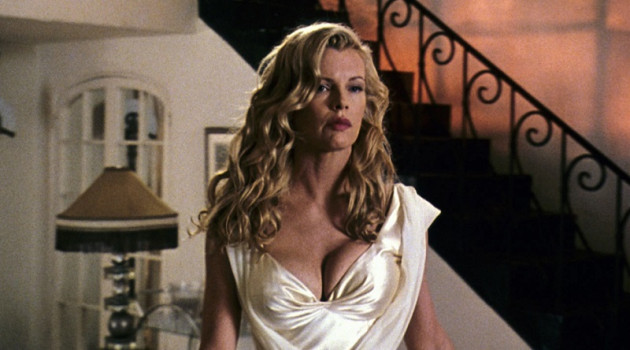
L.A. Confidential
For Lewis, the combination of mobsters and movie stars creates a heady admixture of criminality and influence that can be traced back to the Mafia’s infiltrating of the studios via the Teamsters, creating a co-dependent relationship that could only ever end in tears as the production system went into decline, audience figures sliding from the highs of 1946 and competition from TV and powerful stars who wanted to go out on their own and realise millions with agents like Lew Wassermann; while the Paramount Decision started the divestment process that really was the beginning of the end of their hegemony. Suddenly, there was no there there.
Robert Mitchum’s famed 1948 Laurel Canyon reefer bust is connected with the Mickey Cohen operation through actress Lila Leeds, who was in fact trying to set him up for a shakedown, in much the way it is theorised that Kirk Douglas was hit on by Jean Spangler a small-time actress who had a bit part in Young Man With a Horn (1950, Curtiz). Spangler was quickly disposed of (allegedly) once Douglas’ agent Charles Feldman contacted handsome Johnny Roselli, an intimate of both Mickey Cohen and Columbia boss Harry Cohn. “Young women have always been disposable commodities in the movie business. In the absence of a physical site for the film industry that women like Spangler could find easily on a map, the drama of discovery got more complicated” (Lewis: 67). Spangler’s story is interrogated in Megan Abbott’s novel The Song Is You, in which the author characterises the allure of the actress who disappeared in strange circumstances:
Everyone smiled when Jean Spangler smiled. That’s why they all said she’d make it someday. And why no one had been surprised when the leading men started circling. (Abbott, 2007: 4)
In this evocative spin on Hollywood sleaze, Abbott’s protagonist is a hardened studio publicist with a dark heart whose own ex-wife has skin in the game. It is disconcerting to remember that Douglas lived on until 2020, Spangler a mere footnote in the history of Hollywood crime but Abbott at least gives her something of a happy ending. She skilfully weaves atmospheric detail into a fiction about what we suspect were the perverse predilections of movie stars, placing a well-loved song-and-dance duo in the frame for druggy S&M:
You couldn’t take your eyes off the show because it gave the promise of the kind of group debauch always in the Hollywood rumor mill but rarely available right before your eyes. (Abbott: 36)
The strength of Abbott’s writing lies in its deliciously descriptive detail and the psychological observations of a protagonist whose limits are pushed to the point where he doubts his own equilibrium. Perhaps we should tip our hat and call this philosophical approach to west coast decline Spanglerism.
Sometime in the Forties, Raymond Chandler wrote a letter to a friend on the happy tribal bond he observed between the Mob and studio owners:
Same faces, same expressions, same manners. Same way of dressing and same exaggerated leisure of movement. (Lewis: 68)
And then, wouldn’t you just know it, a gangster goes and shows up dead in a movie star’s bedroom. In real life, ‘sex-mad’ sweater girl Lana Turner’s relationship with ruthless gangster Johnny Stompanato ended up badly for him, while she stayed very much alive, her stop-start career getting a boost from her performance at the coroner’s inquest, her props a bloodied kitchen knife and a perfectly pitched fainting spell, her only supporter amongst journalists Walter Winchell, who exhorted his readership to
…give your heart to the girl with the broken heart. (Lewis: 99)
Mickey Cohen remained convinced that it was Turner and not her teenage daughter Cheryl Crane who had been the true killer of his former bodyguard, a bizarre twist ending to two tales: one, Turner’s domestic life that had seen ex-husband actor Lex Barker abuse the girl, bringing to a premature end that unwise marriage; the other, an appearance at the Kefauver Committee that saw Cohen’s description by the ambitious chairman reveal anti-Jewish sentiment as Stompanato’s role in celebrity blackmail was revealed in a kind of journalistic code. By the time of his murder in 1958 it was altogether clearer what he had been doing for Cohen, leaving in his wake a never-ending paper trail of loans from movie stars who didn’t seem to need repaying. Lewis summarises the shared ambition of these apparently antithetical groups who nonetheless were magnetically drawn to each other:
Gangsters and movie stars were in a fundamental way after the same thing: success. (Lewis: 104)
He describes their common rough and tumble upbringing through the Depression and their desire to get out and experience what were effectively double lives.
The movie stars – and circling about them the many movie industry aspirants, wannabes, and sycophants – were always playing at things, trying on roles, aliases, lovers, identities, fads. But the gangsters meant business, in the strictest sense of the expression. And that was something folks who trucked in the world of make-believe were reluctant, unable, to appreciate and understand (105).
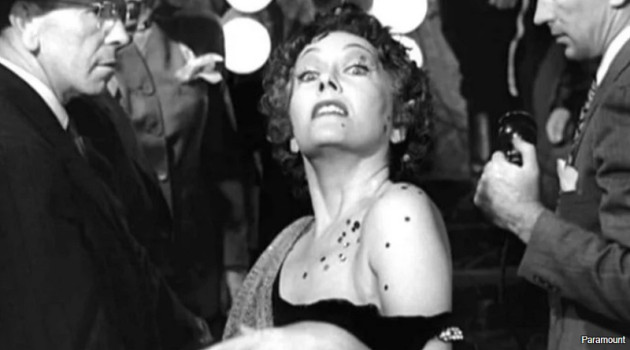
Sunset Blvd.
The role of the gossip columnist and the Red Scare takes centre stage in the book’s third chapter, taking a political turn to the left at Sunset Blvd., exploring that film’s meta- commentary in the figure of star gossip columnist Hedda Hopper, whose wheelhouse director Billy Wilder precisely nails. Hearst writer Louella Parsons turned down the opportunity to appear as a predatory journo, probably wisely. The body of screenwriter Joe Gillis (William Holden) is positioned as a kind of metaphorical Elizabeth Short, the bearer of truth in an overarching narrative in a chapter whose text addresses, amongst other issues, the struggle for control of the Screen Directors’ Guild with its controversial loyalty oath, revealing Cecil B. DeMille as an anti-Semite in a war between the studios and the industry guilds and writer/director Joseph Mankiewicz forced into a dangerous game.
Overall, the Hollywood press and its finagling relationships with studios, politicians, the police force and actors, is strung out from the coverage of the body-dumping phenomenon to a cull of celebrities who wouldn’t or couldn’t recalibrate their scandals appropriately and suffered innuendoes or worse. The author reminds us
That a key aspect of policing Hollywood was left in the gossip columnists’ hands foreshadowed, even foregrounded HUAC’s targeting of screenwriters. Indeed pitting screenwriters (about whom most filmgoers thought and cared little) against actors (and movie stars!) ran deep (122).
The role of the columnist as FBI feeder (with John Garfield a high profile pawn whose sympathies Parsons denied) and the use of their bylines as vehicles for public confessions approved by the studios was commonplace. Even Redheaded comic Lucille Ball dallied in this tawdry seam, befriending Hopper, who assisted in the presentation of the TV star’s life as domestic fiction: “Hedda wasn’t taken in. She was taking sides” (129). A lengthy diversion with Frank Sinatra and his dealings with ‘angry man of the press’ Westbrook Pegler, a little known name now whose political predilections ultimately proved too crazy even for the John Birch Society, proves a roundabout way of leading to one of the author’s important conclusions:
This is all to say that the weight of celebrity in postwar America became unduly heavy, so much so that it victimized the politically naïve along with the emotionally frail and weak. The prospect of pleasing Hopper and [Louella] Parsons, of safely navigating the worlds lorded over by [Walter] Winchell and Pegler, became at once necessary and impossible. As a consequence, the movie-star discourse took on a significantly darker character, one evinced in the short and sad stories of Barbara Payton and Marilyn Monroe… (Lewis: 144)
Parsons’ and Hopper’s own celebrity would eventually fade like that of the stars they condemned to exposure, obscurity or worse, replaced with the lewd and cynical Confidential magazine which was first published in 1952 sounding a death knell to those gossiping witches’ power-plays but leaving their prey out on a potentially more dangerous limb.
Megan Abbott’s novel about Jean Spangler also features the actress Barbara Payton in a significant subplot; the other body whose downfall forms the capstone to Lewis’ investigation:
Truth was, as much as he liked Barbara, he’d been growing weary of the type. The itchy colts, always fixing to run into a fence, a tree, anything. Barbara Payton, hell, she was all tits and mouth, and he’d been around just long enough to know that no amount of ‘potential’ in the world could save her from her deathless desire to ruin herself. In five years, maybe less, he knew there’d be crimson spider veins on that milk face, either two handfuls too much or too little on those ivory-for-now, soon-to-be ashen-gray hips. These types always went to seed, you could hear it rattling around under their shiny hair every time they shook their heads. (Abbott: 82-3)
A cult figure now whose startling performances greatly enliven any of the few films in which she appeared – check out Kiss Tomorrow Goodbye (1951, Douglas)– Payton’s slow demise until her final gasp aged thirty-nine in 1967 is awful to read. Her lurid private life overwhelmed her career and beauty and she ended her days drunk and hooking on Hollywood Boulevard. She had relationships with many famous men (including James Cagney’s brother William and Franchot Tone) which brought her close to the top albeit briefly but her prolific sexual appetites also managed to bring her disaster. When the money ran out in the late Fifties she submitted to the money offered by Confidential to spill the beans on her escapades with the married Bob Hope whose hype as a clean-living beloved star had been secured through studio deals in syndicated columns over the years, his serial philandering hidden from the public. It had taken Payton a decade but she finally got her pound for flesh. The magazine’s publisher Robert Harrison traded in obscenities and libels and skated close to the edge of legal challenges on numerous occasions.
As Mark Shiel points out elsewhere, there is a “key feature of Los Angeles film noirs – a sense of geographic dispersal generated by a diversity of settings and the emphasis placed upon the business of getting around the city, on foot or in a car, a feature that many Los Angeles film noirs share with earlier slapstick comedies” (Shiel, 2012: 218). We are reminded that what would become the city’s most famous body (both dead and alive), that of Marilyn Monroe, resorted to being photographed nude in the spring of 1947 when she was threatened with having her car repossessed, which would have prevented her attending auditions across the sprawling metropolis. As Schweitzer reminds us, “the car became the pivot around which Los Angeles revolved” (Schweitzer: 13-14). For someone so particular about her appearance and the staging of publicity shots which were a performative extension of her carefully constructed star image (the Method to her madness, as it were), the final affront and tragic irony of her life was to lose control of the presentation of her corpse, staged shabbily and unconvincingly in her own guest house by persons unknown following her mysterious death, probably in an ambulance en route to Santa Monica Hospital after having drugs administered to her by a third party. Monroe was always judged by her astounding and carefully cultivated appearance and on that basis alone we might conclude that she was not the author of her own death. Lewis assesses the competing narratives of what might have happened that evening but is more interested in the effect of what occurred on 5th August 1962 and averts to its significance:
Monroe here offers one last dead body in the scheme of things – one last corpse left by the side of the road that in fact and metaphor speaks for an industry and city in transition, one last narrative that altered forever the Hollywood zeitgeist. After Monroe, the filmgoing public’s imagined Hollywood as a site of glamor, of social mobility, of luck and fortune, beauty and smarts, fame and celebrity would never be the same. (Lewis: 180-181)
The importance of Monroe’s death, then, lies in “the various subcultures at play in Los Angeles at the time and the inevitable path-crossing that occurred when the lines between modes of celebrity were so complexly transgressed” (184).
The book’s cover star Sandra Dee saw her own short but spectacular career and her marriage to singer Bobby Darin implode in 1967, still in her early twenties, anorexic, alcoholic and all but finished. Although it should be noted that she would give a fine performance in AIP’s The Dunwich Horror (1970, Haller) where she finds herself the victim of a Satanic plot along the lines of Rosemary’s Baby (1968, Polanski), perhaps a not entirely alien situation considering her history of being sexually abused as a very young child by her mother’s husband. She would die in 2005, her perky goody-two-shoes image permanently frozen in time some forty years earlier.
Lewis’ ingenious construction, placing women front and centre of a study that combines aesthetic, historic and political aspects of the film industry, composes a siren song of dire consequence, a mosaic of amorality that shows human behaviour close to its worst as the Hollywood dream dies a death.
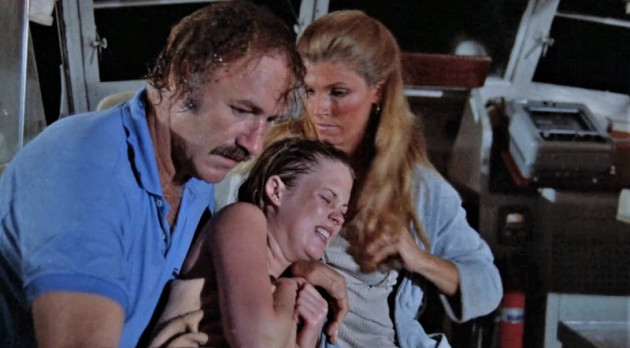
Night Moves
These tales from the crypt are written about somewhat densely in a complex structural analysis, a scalpel scything through Hollywood’s underbelly of psychotic phantasmagoria, with wit, style and a deal of anger reserved particularly for what Lewis calls the ‘rats’ who grassed up names to the HUAC. He tersely juxtaposes the grisly with the grand, the grotesque with the frankly tacky, as all these groups with vested interests crash against each other and take no prisoners. It is a combination of urban studies and forensics, true crime, film history, politics and celebrity studies, the studio system’s troublesome decline indelibly etched against the activities of crooked cops, muck-raking scribes, gangsters and movie stars, in a whirl of suburbanisation and social change. This is a cultural history drenched in blood, death and tears.
As the film noir genre evolves from the hard-boiled version to incorporate the police procedural, rogue cop and heist variations, we see the change in spatial importance of certain areas – the drama recedes from downtown areas like the flatlands and Bunker Hill, towards the suburbs and the beach and encroaching wilderness which provide moody and menacing forms of mythic punctuation (Shiel: 221). This literal drive toward increased location shooting might be attributable in part to economics or authenticity but it has the effect of bringing crime closer to home by virtue of the universal relatability of the architecture in this horizontal sprawl which lacks the imposing buildings and skyscrapers of more established cities like New York:
Hence, retail and food outlets were particularly common – supermarkets, department stores, drugstores and roadside diners– as were places of transit that allowed for anonymous movement and interaction in the drama, including train stations, bus depots, parking lots and streets. Especially prominent too were sites of more sensational activity, including hotels, nightclubs, bars, casinos and race tracks. Offices and commercial buildings figured frequently but industrial installations less often; residences included both apartments and single-family homes, though the latter were preferred; police stations, as in In a Lonely Place, were ubiquitous and increasingly bright and airy. (Shiel: 226-7)
Thanks to Hollywood noir we are as familiar with the content of the shelves at Jerry’s Market (Double Indemnity, 1945, Wilder) and Jon’s all-night supermarket on Fountain Avenue (The Long Goodbye, 1973, Altman) as we are with our local stores. Los Angeles, then, is a locus of hallucinatory modernity, enhanced occasionally by elevated shots from the surrounding hills, the city of the future crawling out towards the canyons and mountain ranges beyond the horizon as the body count mounted and the studios collapsed. The homes of the private eye and lone wolf investigators are separate from the bungalows of the nuclear family the city was attracting – they are in apartment blocks and courtyard complexes and boarding houses offering another counterpoint to the magnificent mansions of their wealthy clients and a location for extra-marital liaisons (Shiel: 230).
Los Angeles is on a fault line, not just physical but psychological, the embodiment of all our movie dreams, Hollywoodeas corpus, if you will, a schizoid representation of corrupt souls echoed in the fractured story dominating the life of struggling actress Diane (Naomi Watts) in Mulholland Drive (2001, Lynch), when the film that unspools in her mind is infinitely preferable to the sordid reality away from the movie set. It is
the most caustic attack on the ethos of Hollywood since Nathanael West’s Day of the Locust … a surreal nightmare of greed, lust, betrayal, jealousy and hypocrisy. (Silver & Ursini: 50)
The lore of the city is intimately entwined with the silver screen in a relationship that could be symbolised by the ouroboros –eating itself in order to sate its wanton appetite, endlessly gorging in order to infinitely replenish and reproduce. That the city responsible for generating much of noir fiction and the film noir genre should itself be the locus of so much doom and death is the overwhelming irony driving these texts which deal with the persistence of a disturbing collective vision, a vacant pessimism whose grimy details have always found an escape route on the silver screen, serving as mediaeval cure. As Schweitzer states, “noir was defined by Los Angeles, and Los Angeles was defined by noir” (13).
Together or apart in a crowded field of noir studies, these volumes add to an occasional body of work that symbiotically and simultaneously mythologises and cannibalises. The city which offers the possibility of reinvention is always reinventing itself. Outside of sociocultural studies by Reyner Banham and Mike Davis, there is Alain Silver & James Ursini’s L.A. Noir: The City as Character (2005) in which the authors tour Los Angeles using close readings of classic films to create a social history, illustrated with stills and new photography by Elizabeth Ward; Ward and Silver’s earlier Raymond Chandler’s Los Angeles (1987), a self-declared ‘photographic odyssey accompanied by passages from Chandler’s greatest work’ complements that work; while the aforementioned book by Mark Shiel takes the baton to map movies architecturally across all those dark places we have come to love, loathe and fear.
Wedged between mystery and history, these are deftly plotted analyses of a town chronicled as much in fiction as in fact, a woozy warp and weft of crime solidifying the impression embedded in film and print of a Los Angeles we think we can locate with a map (perhaps that one based on locations in Chandler’s novels and life courtesy of Herb Lester), hinting where the bodies are buried. Its legend is as ethereal as air and as desolate and muddy as the engulfing shadows and sulphurous smog. This is a sensory world away from the honeysuckle scent of murder wafting sweetly while knights errant embark on a moral crusade in that big dry sunny place with ugly homes and no style; it’s a scenario of exquisite corpses that have attained the status of secular relics leaving lipstick traces on our rearview mirror as we skid into the void.
In the words of Robert Crais’ private eye Elvis Cole, “L.A. isn’t the end; it’s the beginning” (1999: 435).
This Book Review essay was written in 2019
BibliographyAbbott, Megan (2007). The Song Is You. London: Simon & Schuster.
Anger, Kenneth (1965, 1975, 1983). Hollywood Babylon: The Legendary Underground Classic of Hollywood’s Darkest and Best Kept Secrets. New York: Bantam Doubleday Dell Publishing.
Banham, Reyner (2009) . Los Angeles: The Architecture of Four Ecologies. Los Angeles: University of California Press.
Ceram, C.W. (1965). Archaeology of the Cinema. New York: Harcourt Brace.
Chandler, Raymond (1949). The Little Sister. Boston, Mass.: Houghton Mifflin Harcourt.
________ (1953). The Long Goodbye. Boston, Mass.: Houghton Mifflin Harcourt.
Crais, Robert (1999). Los Angeles Requiem. London: Orion Books.
Davis, Mike (1992). City of Quartz: Excavating the Future in Los Angeles. London: Pimlico.
Ellroy, James (1994). The Black Dahlia. London: Arrow Books.
Gilmore, John (2006). Severed: The True Story of the Black Dahlia. Los Angeles: Amok Books.
Ide, Joe (2016). I.Q.. New York: Mulholland Books.
Hughes, Dorothy B. (1947). In a Lonely Place. London: Penguin Books.
Jones, Dan. ‘Ugly, funny, puerile, pompous,’The Sunday Times, Culture section, 26th May
2019: 35.
Lingeman, Richard (2012). The Noir Forties: The American People from Victory to Cold War. New York: Nation Books.
Macdonald, Ross (1949). The Moving Target. New York: Knopf.
Shiel, Mark (2012). Hollywood Cinema and the Real Los Angeles. London: Reaktion Books.
Silver, Alain & James Ursini (2005). L.A. Noir: The City as Character. Los Angeles: Santa Monica Press.
Elizabeth Ward and Alain Silver (1987). Raymond Chandler’s Los Angeles. New York: Peter Mayer.
West, Nathanael (1939, 1975). Day of the Locust. London: Corgi Books.
Select FilmographyChinatown (1974) w. Robert Towne, d. Roman Polanski
Double Indemnity (1944) w. Billy Wilder and Raymond Chandler from the novel by James M. Cain, d. Billy Wilder
In a Lonely Place (1950) w. Andrew Solt and Edmund H. North from the novel by Dorothy B. Hughes, d. Nicholas Ray
L.A. Confidential (1997) w. Brian Helgeland and Curtis Hanson from the novel by James Ellroy, d. Curtis Hanson
The Lincoln Lawyer (2011) w. John Romano from the novel by Michael Connelly, d. Brad Furman
The Long Goodbye (1973) w. Leigh Brackett from the novel by Raymond Chandler, d. Robert Altman
The Maltese Falcon (1941) w./d. John Huston from the novel by Dashiell Hammett
Mulholland Drive (2001) w./d. David Lynch
Murder My Sweet (1944) w. John Paxton from Raymond Chandler’s novel Farewell, My Lovely, d. Edward Dmytryk
Night Moves (1975) w. Alan Sharp, d. Arthur Penn
Otherhttps://shop.herblester.com/products/the-raymond-chandler-map-of-los-angeles-city-guide. Accessed 14 June 2019.
Notes
- 1947 was a good year for crime fiction with Mickey Spillane’s Mike Hammer making his debut in I, The Jury; Kenneth Millar aka Ross Macdonald published Blue City; and even Nancy Drew made her 24th appearance in The Clue in the Old Album. ↩

